“Whatever you do, don’t take the train to Serbia!” my tour guide exclaimed. “The best way to visit Serbia from Zagreb is to take the bus.” Unfortunately, I’d already purchased my train ticket. On the morning of my departure, fearing the worst, I climbed aboard a decrepit, graffiti covered train to find a surprisingly clean coach with comfortable seats. I stowed my luggage and settled in for a relaxing, seven-hour ride through the unbroken, green countryside.
With Europe experiencing the worst heat wave on record this summer, I had confirmed that the train was air conditioned before purchasing my ticket. Soon however, the interior of the train started to get uncomfortably warm. By the second hour, passengers began to politely ask the conductor to turn on the air. Word trickled through the coach that the Croatian conductor did not have the authority to turn on the air in this Serbian train. We would have to wait until a Serbian conductor took over.
Hopes for relief after crossing the border were dashed; pleas to the new conductor were met with indifference. Temperature soared to unbearable levels as the sun bore down on our metal coach. Many of us tried to open windows, hoping to at least catch a breeze, but not only were the windows sealed shut, the train began to slow down. We crawled along at 20 miles per hour for the last few hours, stopping completely in the middle of the Serbian countryside for long periods of time. Seven hours later, we finally pulled into Belgrade. Exhausted and drenched in sweat, I followed my soggy fellow passengers out onto the platform. My plan to visit Serbia was beginning on shaky ground.
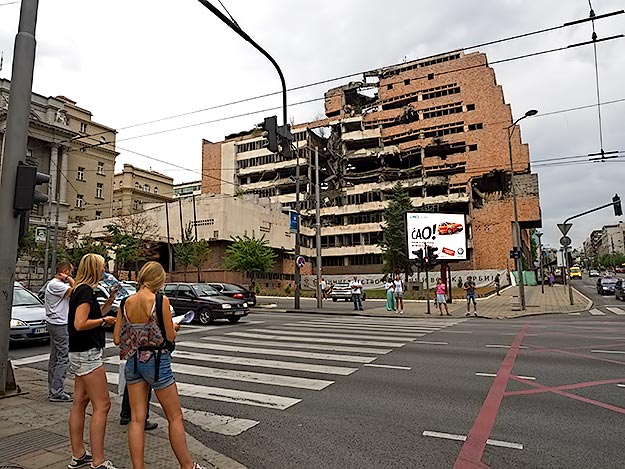
Manga Hostel had advised me not to bother getting local currency at the train station, as there is an ATM right next door to the hostel. They also advised that the hostel was easy walking distance from the station. With waning energy, I tossed my 22-pound, equipment stuffed backpack over my shoulder and headed up the main street with my rolling suitcase. Three blocks later I turned left at the bombed out craters of two ex-government buildings and groaned at the hill before me. I trudged uphill, kicking myself each time a tram or a taxi passed me for not having gotten local currency. Spent and out of breath, I finally, arrived at the address shown on my reservation but found only a high metal gate pulled across a dark archway. I wedged myself and my luggage through a small opening in the gate and followed the oil-stained asphalt to an inner court parking lot. At the far end of the lot, a tiny sign marked the Manga Hostel. I wondered what I had gotten myself into.
Manga may have had zero curb appeal, but it turned out to be a fantastic hostel. My private room was modern and spotless, with icy cold air conditioning. The amazing Igor, who made me feel right at home from the moment I set foot on the property, provided one of the best orientations for a city that I’ve ever had, including the location of vegetarian restaurants and health food stores. Every evening, guests congregated in the common area in the basement and talked long into the night, sharing tips on places to visit and solving the world’s problems.

After a good night’s rest I decided to take advantage of the 2.5 hour free walking tour of the city that Igor had suggested. True to his recommendation, the tour was extremely well done. From the Bohemian Quarter of Skadarsk, which is party central by night, to Belgrade Fortress, which occupies a bluff above the confluence of the Sava and Danube Rivers, we saw it all. At stops along the way, out guide challenged us to answer questions about Belgrade, rewarding us with prizes like a shot glass known as cokanjcic, which Serbians use to throw back shots of their powerful fruit brandy known as Rakija. On one street, she pointed out the facade of a building still pocked by bullet holes, twenty years after the end of the Balkan War. The two bombed-out government buildings I had seen the day before were left over from the NATO actions in 1999, which ended the Serbian invasion of Kosovo.
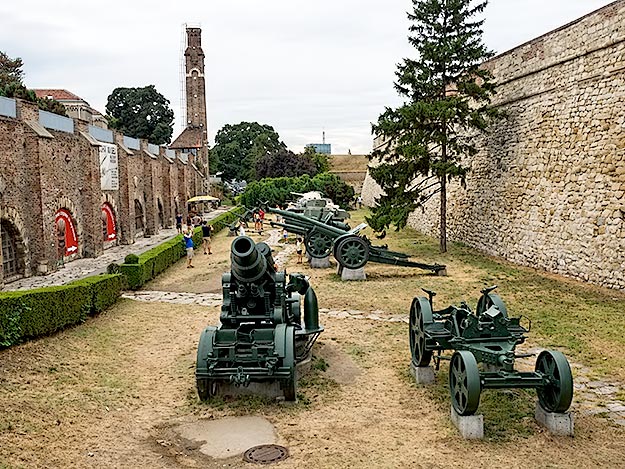
The fact that much of the war damage in Belgrade has not been repaired is indicative of just how much the Serbian economy is still struggling. At one point, the country had the dubious honor of having the highest rate of inflation in history (until Zimbabwe and Mugabe came along). During those days, people stood in line for hours to buy a loaf of bread or gallon of milk, carrying bags full of virtually worthless paper money to make purchases. They spent their money as fast as possible because the rate of inflation was adjusted hourly. At the height of the inflation, one German Deutchmark was worth 100,000,000,000 Serbian Dinars. The government finally cured inflation by printing new money, but the economy is still recovering. According to our guide, the only good thing about Serbia’s economic situation is that the worldwide crash in 2008 and subsequent recession was not felt at all in the country.

As a result, Belgrade is hardly a typical tourist town. There are some pretty, pedestrianized boulevards where sidewalk cafes and kiosks line the streets and kids splash in fountains, but it’s not a gorgeous city. Outside of the central business district, many of the buildings are disintegrating, the streets are a bit gritty, and the infrastructure is old. Everywhere, everything is under construction, and has been for years. The National History Museum, for instance, was supposed to be restored and reopened in a year, but is still closed ten years later.
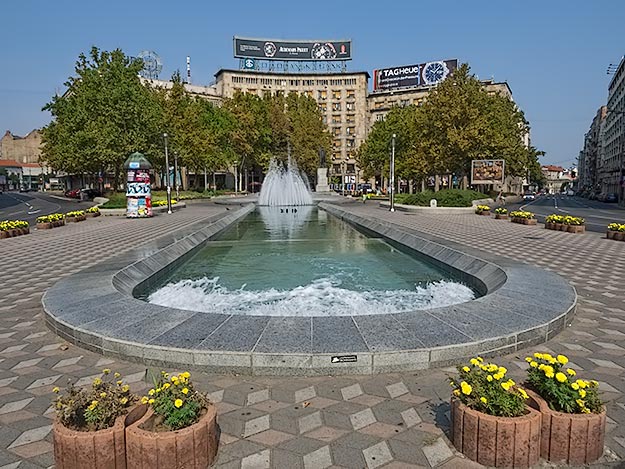
Despite all this, I quite liked Belgrade. It may be gritty, but it’s real, and the true treasure of the city is its people. Everyone is incredibly friendly and very positive about the future, which I found mind boggling in a country where the average monthly wage is just 200 Euros. Tourists are welcomed with open arms, English is widely spoken, and the cultural scene is jam packed with live music, art exhibitions, and festivals. Best of all, it’s extremely safe and incredibly cheap. My private room at Manga Hostel was 23 Euros per night (about $25), and the most I paid for a meal was $12, with most running around $6-8.
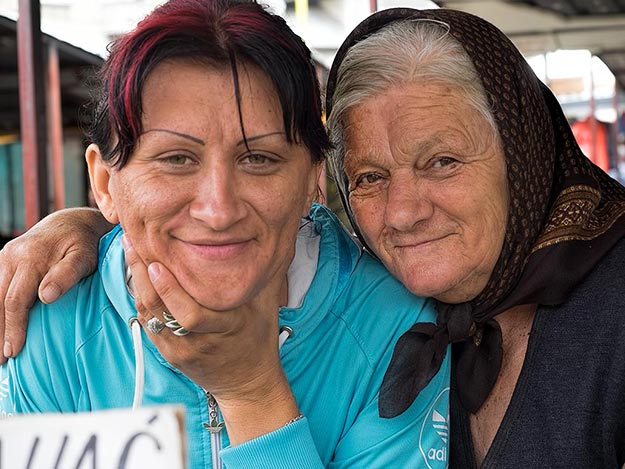
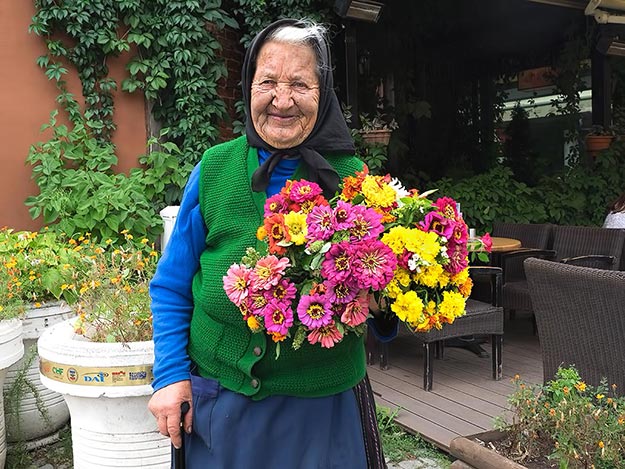
After a few days in Belgrade, I was faced with the decision of where to go next. I had considered going north to visit Serbia’s second largest city, Novi Sad, but that would have sent me in the wrong direction. On the other hand, after my horrible train ride a few days earlier, I had no appetite for a 12-hour bus ride to Skopje, Macedonia. The solution came from the amazing Igor, who suggested taking the two-day “Devil’s Tour” to southern Serbia with Amazing Tours Serbia, run by the same folks who provide the free walking tour. Though designed as a round trip tour with an overnight stay in Niš, it allows participants to stay in Niš rather than returning to Belgrade. Not only would it break up a trip to any destination further south, it would allow me to see sights that would not have been reachable via public transportation.
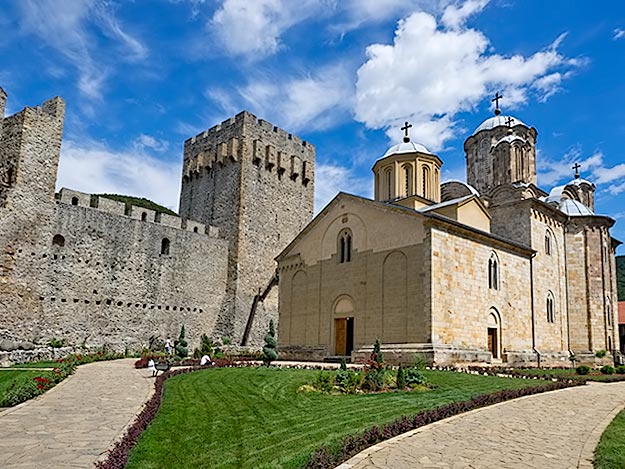
The first stop on the Devil’s Tour was the 15th century Manasija Orthodox Serb Monastery, where a refectory and church dedicated to the Holy Trinity are surrounded by massive fortifications with twelve defensive towers. Completed in 1418, Manasija was one of the last monasteries to be built before the Ottomans conquered Serbia in 1459. Though damaged, it escaped the total destruction suffered by many monasteries during the Ottoman occupation. The exquisite frescoes that survived are remarkable, not only for their vivid blue color, but also because the saints depicted in the north choir of the church are wearing full body armor and carrying swords and lances. UNESCO has described these frescoes as representing a “rare high point in the Byzantine art in its final decades,” earning Manasija a place on the tentative list for designation as a World Heritage Site.
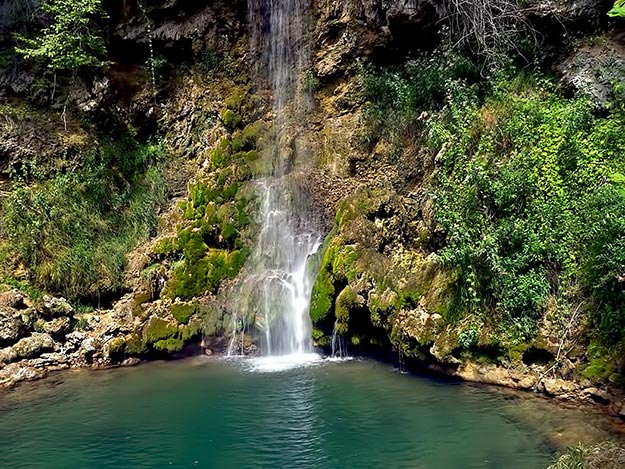

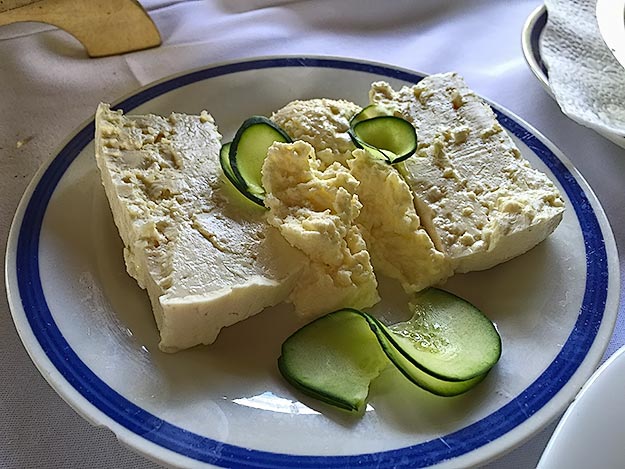
Midday took us to the Veliki Buk waterfall, where we stopped for lunch and I pigged out on Kajmak and cheese, roasted hot peppers, and some amazing grilled veggies. By late afternoon we were in Niš, making stops at a World War II concentration camp and the Skull Tower, built from skulls of Serbian warriors in 1809 by the invading Ottomans. The message was clear: this is what awaits anyone who refuses to submit to Ottoman rule. After checking into our guest house, our guide, Pavle, led us on a walking tour of the historic center of the city, including a stop at Niš Fortress.
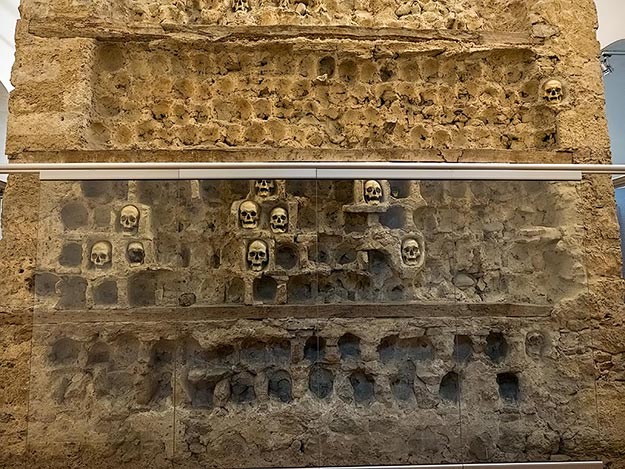
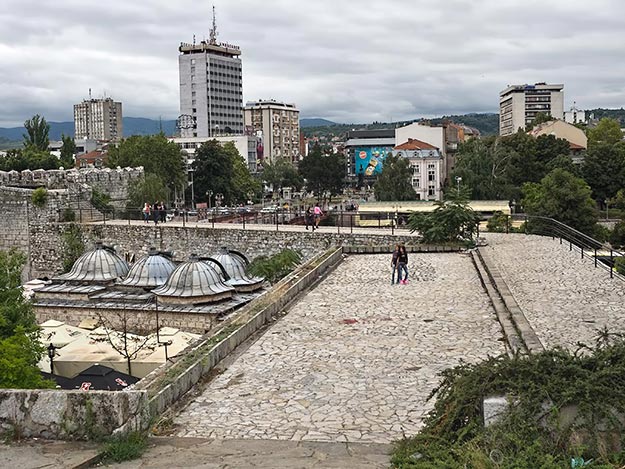
Since the $99 price of the Devil’s Tour included transportation, entrance fees into all sites, one night’s accommodation, and a breakfast, I would have been happy had the tour ended at that point, but the best was still to come. The following day featured a visit to Devil’s Town, a geological formation of 202 earthen pyramids that geologists refer to as “hoodoos.” In this remote valley, where the soil is coppery red, water and wind have eroded the surrounding hillsides. Wherever more resistant stone covered the underlying earth, protecting it from the ravages of erosion, slim spires emerged from the hillside. Like a crimson army, they march down the slopes, each wearing a “cap” of dense gray rock. Locals, however, eschew the scientific explanation, preferring instead to believe a legend that the columns were formed when God turned a wedding party to stone in order to stop an incestuous marriage between a brother and sister.
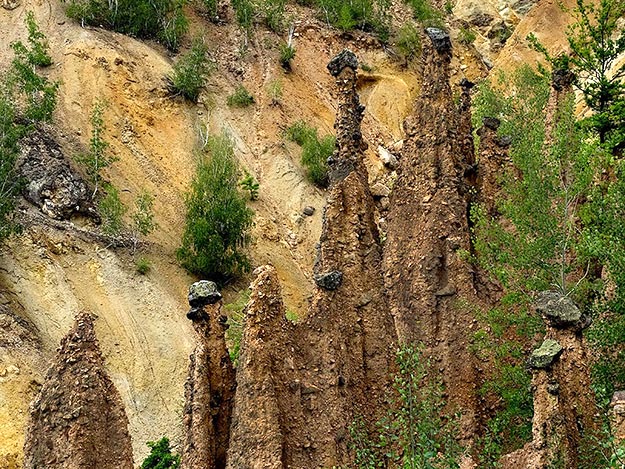
Late in the afternoon, the van delivered me back to the Day ’n Night Hostel in Niš, where I would stay a few more days. When I had finally exhausted the markets, squares, and sights of Serbia’s third largest city, I headed south, but not to Macedonia. Unlike other Serbians, who had insisted that Kosovo was not a safe destination, Pavle encouraged me to stop in the Kosovan capital of Pristina on my way to Macedonia. At his urging, I checked the map and saw that not only would stopping in Pristina nicely break up my trip to Macedonia, it meant I would see all seven of the former Yugoslavian countries. The decision was easy. Kosovo it was. But this time, with the benefit of experience, I opted for a bus.

Nice story, hope you had a great time here. A lot more can be seen and experienced next time you are here. Greetings from Nis
Hi Huge thanks for your blog. Love learning about not so touristy places. Especially Devil Town. I hope to travel and house sit in the future. As I am a 60 year old I look forward to seeing lots more of this huge world we live in Cheers Liz
Good for you, Liz! My goal is to inspire others to travel more, so if I’ve done that in any small way for you, I’m absolutely elated.
People are concerned about the safety in the Balkans but when they come here they are often stunned that it is even safer than in their country, for example you dont have parts of towns that are not safe like you have ghettos all over USA, after all it is Europe not Africa. As for safety in Kosovo, if you are foreigner and especially from USA and EU country you will be more than welcome, Serbs on the other hand are living there in enclaves with fences around and military unlike Albanians in Serbia. And btw that is bombed government building but NATO mostly bombed schools, hospitals and civil buldings and killed over 2000 civilians (even without any apologies) and they didnt stop the war since there was no any since Yugoslav army was fighting against terrorists who were financed and backed by the same NATO, but we see now in France and from 9/11 that western governments with such policy of terrorist support are actually hurting their own people and unfortunately we will have even more such things.
Thanks for that Marko, but as an Australian tourist, do you require visa to go into places like Nis and Pristina? Are there hotels in Pristina, and in particular, I am interested in gaining information from Archives Centre in Pristina, for family tree.
Hi Barbara
Did you travel on your own to Pristina, and were there any troubles, obstacle, so far as getting in, is a visa required?
Thanks
Carolyn
Hi Carolyn: I’ll be publishing an article tomorrow (Tuesday) about my visit to Pristina (yes, I traveled there alone). It has all the details about getting i, etc., so check back to the home page of the blog after 10 a.m. EST.
Fascinating post, thank you! I’ve had several people I know visit Serbia this year, my father included as his wife has Serb parents, but they’ve all been involved with visiting family and I couldn’t get a good picture of what it’s like there at the moment – now I know.
You’re welcome, Amanda. So glad you found my article helpful, and for taking the time to leave a comment.
I personally like to travel by bus. Thanks for telling about the bus booking system as I have no idea about the transport of Europe. I am planning to go to a delightful place in Europe. Please suggest me which will be best for holiday trip.
Hi Mariah: I’m afraid what you ask is impossible.I’m not a tour guide or a travel agent, nor do I know anything about your likes, dislikes, or economic situation. I am just a travel writer and photographer, who hopes to encourage others to travel. I never assist people with their travel plans.
Actually, Kosovo is not 7th ex-Yugoslav country, it is a Serbian province under the NATO occupation and ruled by ex drug dealers and organ traffickers from IS(Islamic State)-like terrorist organization called KLA.
Since you wrote about Manasija, you shouldn’t have missed to read a bit how Albanians destroyed hundreds of similar churches and monasteries in Kosovo and Metohija, just because these monasteries are built by Christian Serbs.
Actually, Marc, 108 of the 193 United Nations (UN) member states, including the United States, have recognized Kosovo as an independent country. I’m an American, thus for me, Kosovo is a country.
Actually, that’s only 1/3 of population (USA, their allies in western Europe and Gulf and puppet countries like Vanuatu and Macedonia). And one more thing, Kosovo is taken from Serbia by force and is not recognized by UN. They don’t have chair in UN.
I respect that you respect your gov decision, but just because USA is the biggest power it doesn’t mean that they should rape the rest of the world.
Not trying to push either view on “country or not country”, it cannot be said that Serbia invaded Kosovo as at the time of US attack it was de facto part of Serbia.
As for the rest, the report is rather well balanced. And yes, if wishing to see other sites of Serbian legacy located in the Kosovo area and listed as UNESCO heritage – unfortunately – you should hurry.
Very good point, D. Thanks for sharing.
Thanks. This is a great report and one that may become very helpful to me in the future. I\’m looking forward to reading about Kosovo.
One question I\’d love to ask you: the idea of taking buses in European countries is a bit scary to me. Can you tell us about the safety of doing that?
Libbie
Hi Libbie: What mode of transportation is best in Europe depends wholly upon where you are. In Western Europe, you always want to take the train. In Eastern Europe, your best bet is usually the bus, as the rail lines are old and in ill repair, and the travel schedules are inconvenient, time wise. In some Eastern European countries, riding the locally-owned train system is fine inside the country (Hungary is one example), but it is not a good idea to take a Hungarian-owned train across a border to another country. Better to find a train that originates outside the country. A website that will tell you everything you need to know about trains is http://seat61.com. The owner of this site is a train expert and he rightly advises that the best booking site to use when buying train tickets or even researching fares is the German rail system: http://www.bahn.de/i/view/GBR/en/index.shtml. As for buses, they are perfectly safe anywhere in Europe, and extremely comfortable. You just want to make sure you’re booking one with A/C, usually designated a deluxe bus. Many even have wifi these days, and they are extremely cheap.